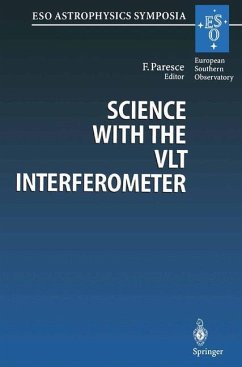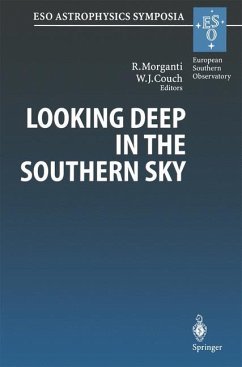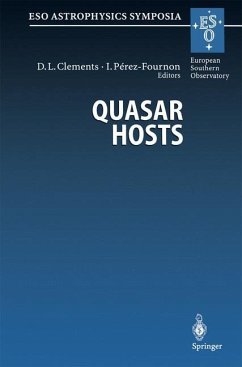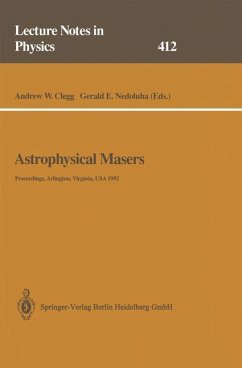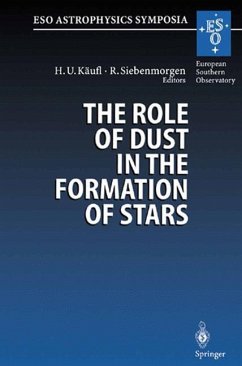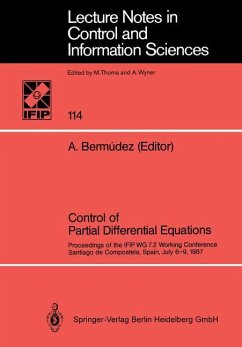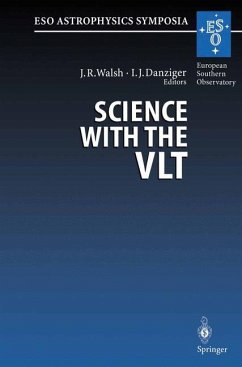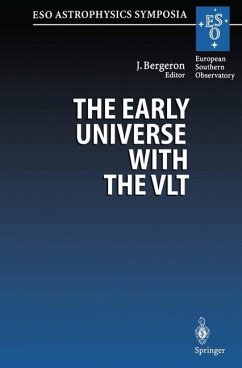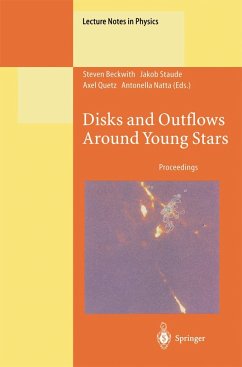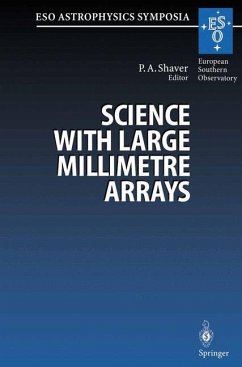
Science with Large Millimetre Arrays
Proceedings of the ESO-IRAM-NFRA-Onsala Workshop, Held at Garching, Germany 11-13 December 1995
Herausgegeben von Shaver, Peter
Versandkostenfrei!
Versandfertig in 1-2 Wochen
39,99 €
inkl. MwSt.

PAYBACK Punkte
20 °P sammeln!
The next major step in millimetre astronomy, and one of the highest-priority items in radio astronomy today, is a large millimetre array with a collecting area 2 of up to 10 000 m . A project of this scale will almost certainly require inter national collaboration, at least within Europe, and possibly with other major partners elsewhere. In order to establish a focal point for this project within Europe, a study has been undertaken by the Institut de Radio Astronomie Mil Ii met rique (IRAM), the European Southern Observatory (ESO), The Onsala Space Observatory (OSO), and The Netherlands Founda...
The next major step in millimetre astronomy, and one of the highest-priority items in radio astronomy today, is a large millimetre array with a collecting area 2 of up to 10 000 m . A project of this scale will almost certainly require inter national collaboration, at least within Europe, and possibly with other major partners elsewhere. In order to establish a focal point for this project within Europe, a study has been undertaken by the Institut de Radio Astronomie Mil Ii met rique (IRAM), the European Southern Observatory (ESO), The Onsala Space Observatory (OSO), and The Netherlands Foundation for Research in Astronomy (NFRA). In the context of this project, a workshop attended by some 100 participants was held at ESO Garching on December 11-13, 1995 to discuss the scientific advances such an array will make possible. Throughout the three days of the workshop the strong enthusiasm for the concept of a large millimetre array in the southern hemisphere (the Large South ern Array, or LSA) was obvious, and it became clear that such a facility would have a profound impact on almost all areas of observational astrophysics. It was particularly clear that, since their main science drivers (cosmology, and the origins of galaxies, stars and planets) are the same, and their angular resolutions and sensitivities similar, the LSA and the VLT would strongly complement each other.





